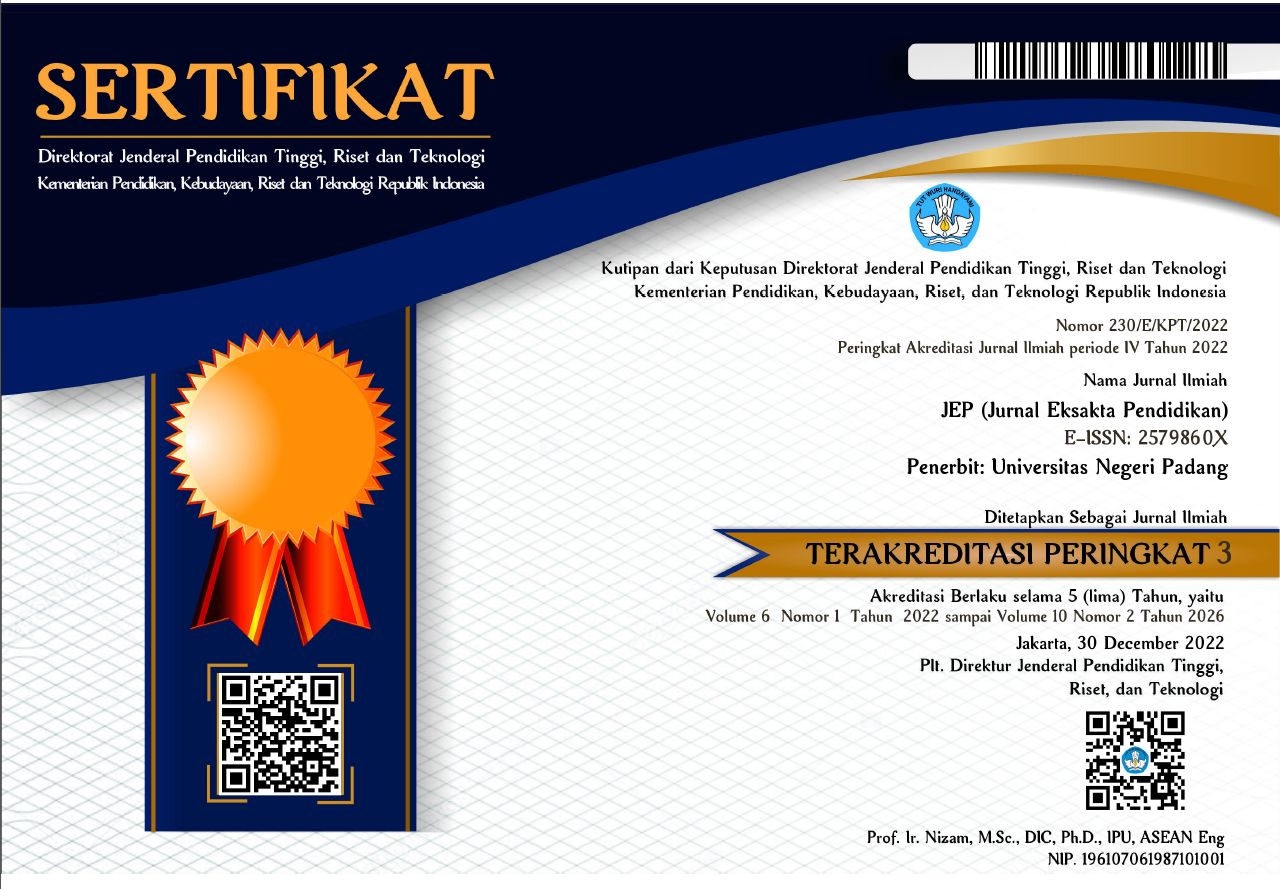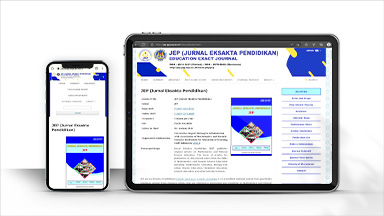Studi Hasil Pelatihan Analisis Video dan Tool Pemodelan Tracker pada Guru MGMP Fisika Kabupaten Agam
Abstract
Experiment is important in physics to explain and describe a physical phenomenon and its characteristics. For this reason physics teachers should conduct the physics experiment activities to motivate students in learning and to improve scientific process skills, scientific attitudes, and student understanding in physics learning. However, in the experiment activities of physics were found many problems such as experiment equipment was insufficient, there is no equipment, equipment can’t operated well, and so on. An alternative solution to solve this problem was to do the video analysis and modeling tool tracker on physics teacher. The purpose of this research was to investigate the effects of the implementation the tracker video analysis and modeling tool on physics teachers. The research design was pretest and postest for one group sample. The sample of research was 26 physics teachers of Physics MGMP teacher in Agam district of West Sumatera. Instruments to collect the data consist of pretest and postest sheet, performance assessment sheet of video analysis product and questionnaires sheet of physics teachers. Data analysis techniques include descriptive statistical analysis, normality test, homogeneity test and paired comparison test for one group sample. From the data analysis, it can be stated that: 1). the average value of video analysis products from physics teachers is 85.10 and this value can be classified into very good category, 2). the average value of responses of physics teachers on training implementation of video analysis and tool modeling is 73.81 and this average value can be grouped into good category, and 3). the implementation of video analysis training of object motion video by using tracker software is effective to improve the understanding the physics MGMP teachers in Agam district on learning material of tracker video analysis and modeling tool, but the average value of understanding still in the low category.
Downloads
References
Anissofira, A., ett, all. (2017). Newton’s Cradle Experiment Using Video Tracking Analysis with Multiple Representation Approach. International Conference on Mathematics and Science Education (ICMScE), IOP Conf. Series: Journal of Physics: Conf. Series 895
Asrizal, Amran, A., Ananda, A., and Festiyed. (2017). Effectiveness of Integrated Science Instructional Material on Pressure in Daily Life Theme to Improve Digital Age Literacy of Students. Journal of Physics: Conference Series, Volume 1006, Conference 1
Brown, Douglas and Cox, Anne J. (2009). Innovative Uses of Video Analysis. The Physics Teacher Journal. Vol. 47
Eddy Yusuf. (2016). Using Tracker to Engage Students’ Learning and Research in Physics. Pertanika Journal Science and Technology, 24 (2), 483-491
Giambattista, Alan., Richardson, Betty McCharty., and Richardson, Robert C. (2010). College Physics: With an Integrated Approach to Force and Kinematics. Third Edition, McGraw-Hill Companies, Inc, New York
Gregario, Jay B. (2015). Using Video Analysis, Microcomputer-Based Laboratories (MB L’s) and Educational Simulations as Pedagogical Tools in Revolitionizing Inquiry Science Teaching and Learning. K‐12 STEM Education, Vol. 1, No. 1, pp.43‐64
Halliday, David., Resnick, Ribert., Walker, Jearn. (2011). Fundamental of Physics. 9th Edition. John Wiley & Sons, Inc, United States of America.
Hockicko, Peter. 2015. Development of Students' Conceptual Thinking by Means of Video Analysis and Interactive Simula tions at Technical Universities. European Journal of Engineering Education,Vol.40 No.2 P.145-166
Hockicko, Peter. 2015. Video Analysis Based Tasks in Physics. Proceeding of the Girep MPTL Conference, University of Palermo, Italy
Hockicko, Peter. 2011. Forming of Physical Knowledge in Engineering Education with the Aim to Make Physics more Attractive. Physics Teaching in Engi neering Education
Hockicko, P. 2014. Video Analysis of Motions. Department of Physics Faculty of Electrical Engineering University of Zilina, Slovakia
Firdaus, T., Setiawan, W., and Hamidah, I. (2017). The Kinematic Learning Model Using Video and Interfaces Analysis. International Conference on Mathematics and Science Education (ICMScE), IOP Conf. Series: Journal of Physics: Conf. Series 895,012108
Repnik, Robert., Robic, Dominic and Pesek, Igor. (2015). Physics Learning in Primary and Secondary Schools with Computer Games-An Example-Angry Birds. Intech Open Science.
Serway, Raimond. A., Vuelle, Chris. (2012). College Physics. Ninth Edition, Charles Hartford, United States of America.
Wee, Loo Kang, ett all. (2012). Using Tracker as a Pedagogical Tool for Understanding Projectile Motion. Physics Education Journal, P 448-455
Wee, Loo Kang, ett all. (2012). Using Tracker to Understand ‘Toss Up’ and Free Fall Motion: a Case Study. Physics Education Journal, 50 (4)
Wee, Loo Kang., Kwang, Wee1 Tze. (2015). Video Analysis and Modeling Performan ce Task to Promote Becoming Like Scientists in Classrooms. American Journal of Educational Research SciEP, Volume 3, Issue 2, Pages: 197-2007
Widiyanto, Susilawati. (2015). Rancangan Kine matika Gerak Menggunakan Alat Ekspe rimen Air Track untuk Media Pembe lajaran Fisika Berbasis Video. Jurnal Informatika UPGRIS, Volume 1, No 2
Young, Hugh. D. (2012). College Physics. 9th Edition, Addison-Wesley
Zitzewitz, Paul. G. (2005). Physics: Principles and Problems. The McGraw-Hill Compa nies, Inc, United States of America.
Zwickl, Benjamin M and Dehui Hu. (2015). Model-Based Reasoning in the Upper-Division PhysicsLaboratory: Framework and Initial Results. School of Physics and Astronomy, Rochester Institute of Techno logy, Rochester

This work is licensed under a Creative Commons Attribution 4.0 International License.




_(2579-860X).png)
_(2614-1221)1.png)




